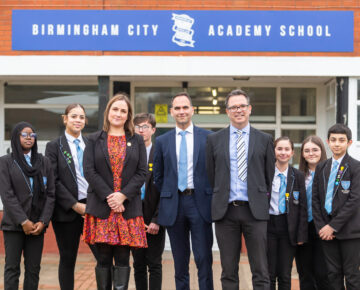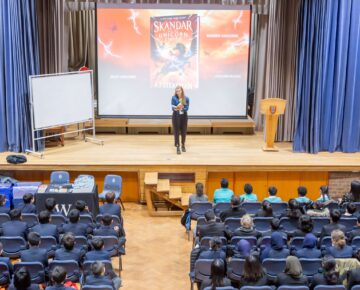Purchase of Edgbaston site 90 years on
December marks the 90th anniversary of the purchase of land in Edgbaston which, slowly, but surely, became the new home for King Edward's School (KES) and King Edward VI High School for Girls (KEHS).
In honour of the occasion, we decided to examine related documents in the archive, to see what they could tell us about the decisions and the lead up to the move.
The first documentary evidence that the school would move location was around 1931 when a High School Sites Committee was assembled that began to examine potential sites. Both E.T. England (KES Headmaster) and L.K Barrie (Headmistress of the Girls School) were in agreement that, if possible, the schools should be situated adjacent to each other – a far cry from the infamous complaints made in 1883 when the school building had to be shared between girls and boys!
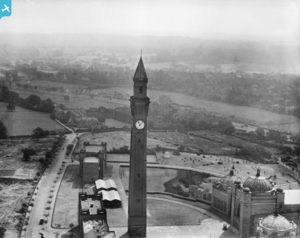
The University of Birmingham clock tower and the surrounding buildings were constructed between 1900–1908, long before the neighbouring site was considered by the school for purchase. The red circle shows the large oak tree behind which the Ruddock Performing Arts Centre now stands.
The High School Sites Committee investigated three areas of land: Edgbaston Hall, Westbourne Road, and Bristol Road. These were all large sites situated in the south of Birmingham, where, according to a survey undertaken by the schools, the majority of KES and KEHS pupils lived at the time.
By December 1931, Bristol Road was the front runner, although the problem of varied ground levels was proving difficult. However, the eight acres of relatively flat ground fronting Bristol Road would provide both schools with enough space for buildings, plus extra playing-fields at not too great an expense. Other benefits were that, while just over 2 miles from the city centre, the site was on a main tramway route. The Calthorpe Trustees eventually agreed to sell the freehold site (containing 30.5 acres) for £18,000 in December 1933.
Meanwhile it became clear that the Governors would have to sell the New Street site in order to finance the new buildings in Edgbaston. Below is the approximate cost of the complete building and temporary buildings, which the pupils would use for lessons until the new site was completed.
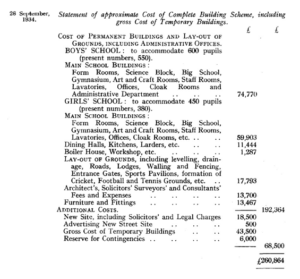
The first offer of £400,000 for the New Street site fell through, but in September 1934 another offer came from Mr Oscar Deutsch, well-known cinema proprietor in the city and a King Edward VI Five Ways alumnus, who wished to build a cinema theatre on the premises. The Prudential Assurance Co. Ltd became the actual purchasers subject to obtaining a licence for a cinema from the justices. As there was no cinema in existence the licensing committee regarded this as 'an altogether exceptional application' but decided nevertheless to grant it.
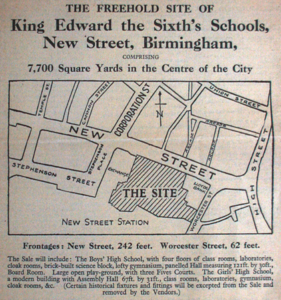
A newspaper advert c.1934 for the King Edwards site containing both the Boys school designed by Charles Barry in 1833 and the Girls School (formerly the Hen and Chickens hotel) redeveloped by J.A. Chatwin in 1895.
The purchasers agreed to the removal of parts of the building, including the careful dismantling of the upper corridor. This was stored for many years, each brick numbered in chalk until it could be reassembled as part of the chapel and war memorial in the 1950s. Other treasures, including the Hen and Chickens plaque from the Girls' School, went to the Art Gallery. It was arranged for some of the stained glass from the windows and some of the carvings on the stairs to be saved and sold for their funds. Some of this glass is now in the school library and Foundation Archive.
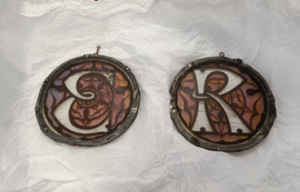
While there were plenty of architects who could have designed the new Edgbaston school, the Governors felt that this role should go to a local Birmingham firm. A number of designs were submitted to the High School Sites Committee, and it was Holland W. Hobbiss who was appointed in 1933. He was not only a famous Birmingham architect (his previous works included houses in Moseley, several churches, The Antelope pub in Sparkhill, Lodge Hill Cemetery Crematorium and Chapel in Selly Oak and the University of Birmingham Guild of Students opposite the Foundation Office) but he was also an Old Edwardian!
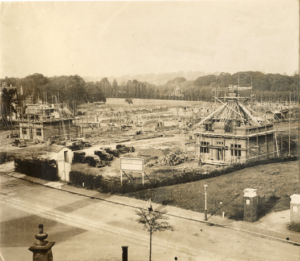
The Porters Lodges under construction c.1938. Parking was clearly an issue then as well as today! This photograph was taken from one of Hobbiss’s earlier buildings – the University of Birmingham Guild of Students.
Work began on site as soon as possible, but it wasn’t until the temporary buildings were completed (late December 1935) and foundations of the schools were laid and porters’ houses were in the process of being built that a stone laying ceremony took place (in case you’ve ever wondered why the foundation stone at KES was so high) on the 5th December 1938.
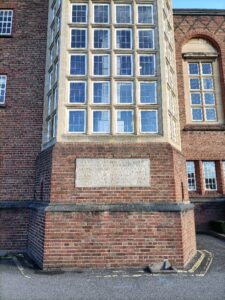
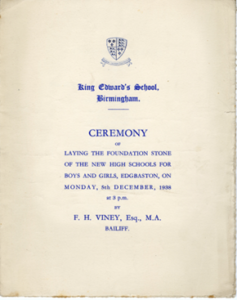
The ceremony was attended by the great and good of Birmingham along with E.T. England (KES Headmaster) L.K Barrie (Headmistress of the Girls School) and F.H. Viney (Foundation Bailiff) all of whom can be seen in this footage from the day https://www.oldeds.kes.org.uk/foundation.html
Barely a month before this footage was shot, the Governors were already discussing air raid precautions and volunteers were being sought from teaching staff across the Foundation schools to serve as air raid wardens. Just under a year later, war would be declared, the pupils evacuated and building work reduced to the bare minimum.
90 years on the Edgbaston site for KES and KEHS is busier than ever. More buildings have been created, more facilities are available, more pupils are in school and there may well be a complete site renovation on the cards in the near future.
